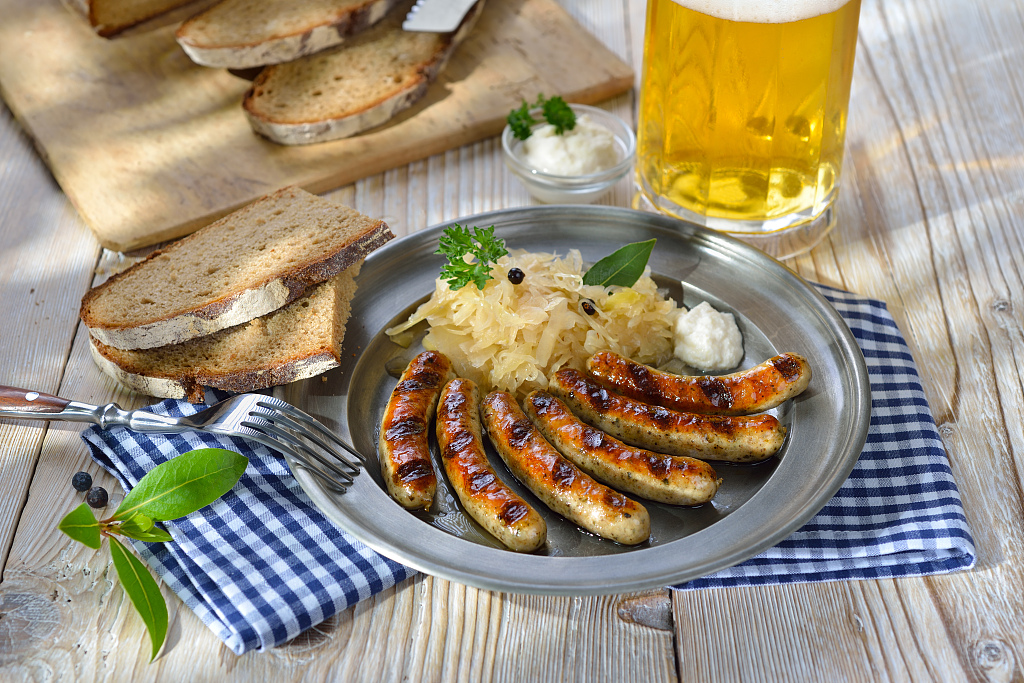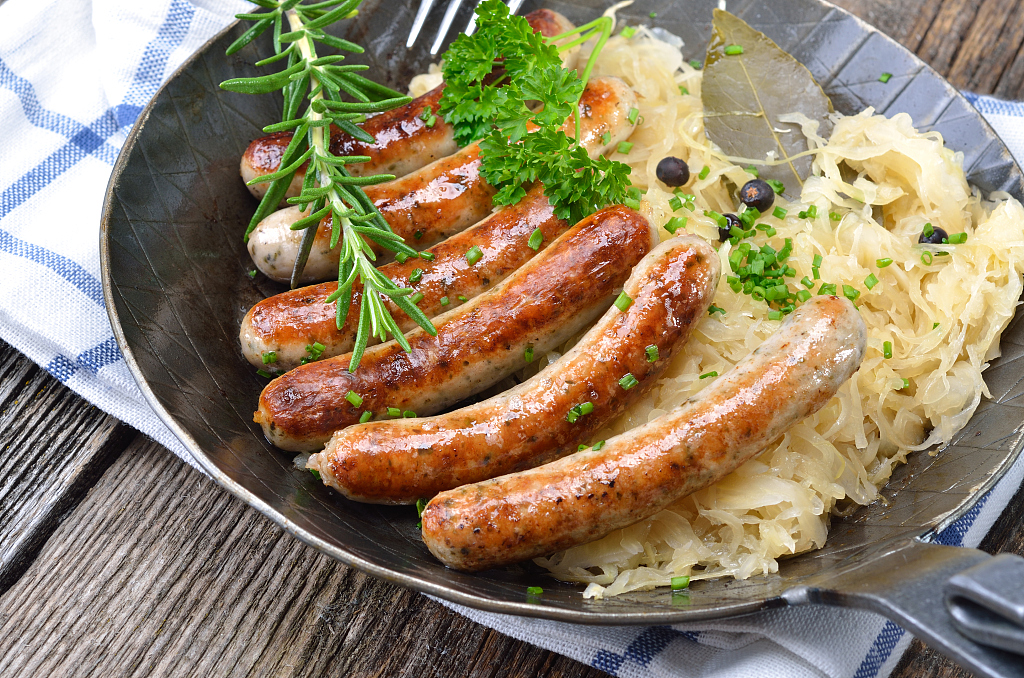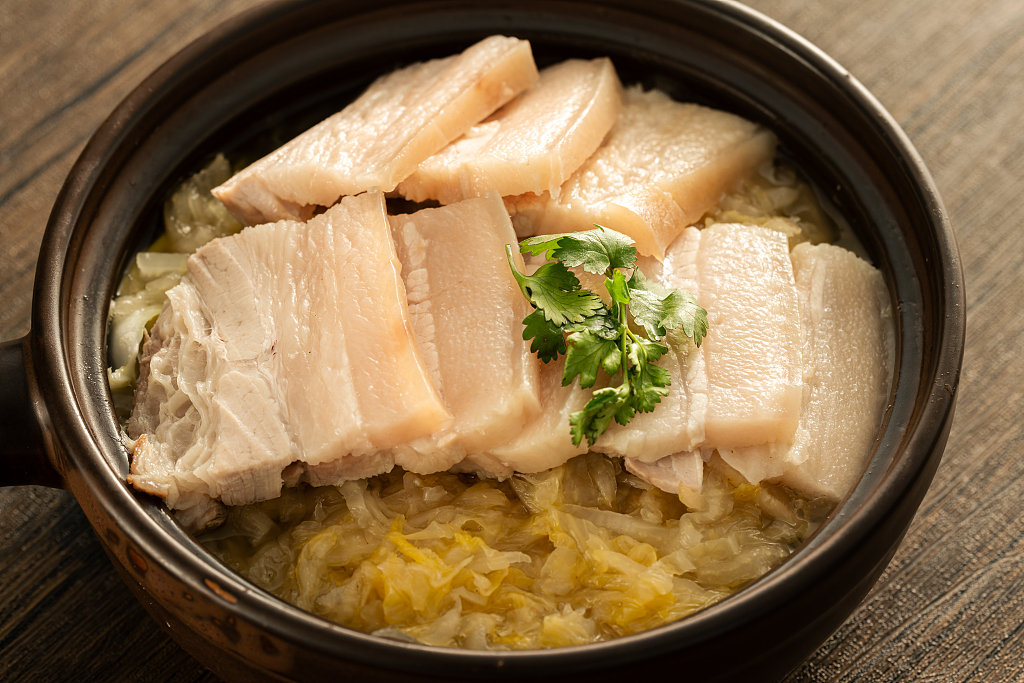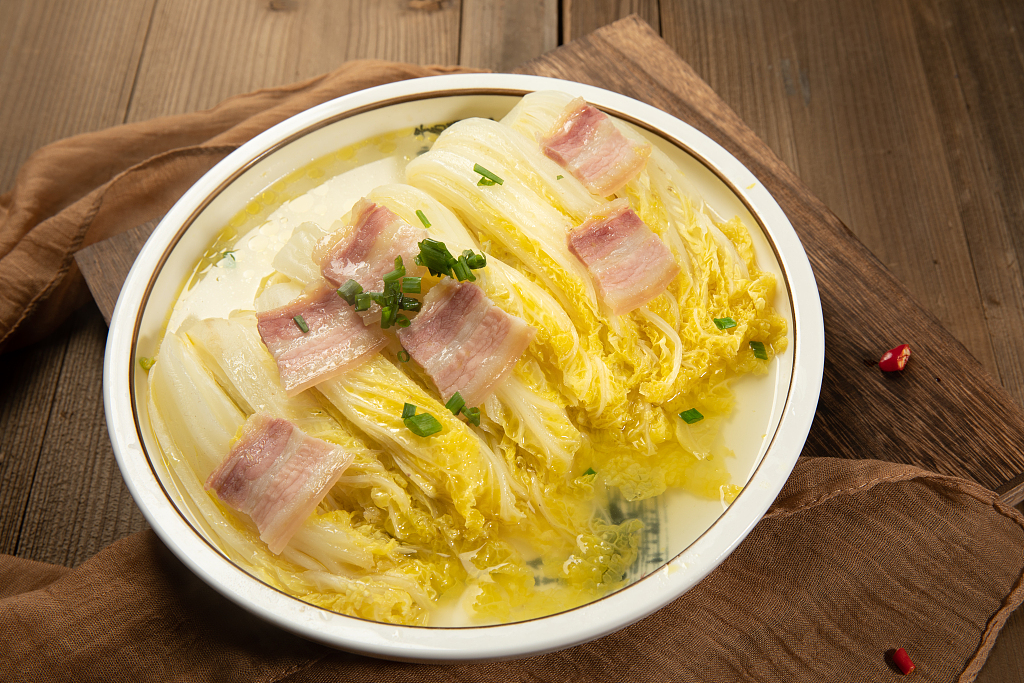
Sauerkraut alongside sausages. /CFP
Sauerkraut alongside sausages. /CFP

Sauerkraut alongside sausages. /CFP
Sauerkraut alongside sausages. /CFP

A Chinese sour cabbage dish. /CFP
A Chinese sour cabbage dish. /CFP

A Chinese sour cabbage dish. /CFP
A Chinese sour cabbage dish. /CFP
Sauerkraut and Chinese sour cabbage share a common thread as fermented cabbage dishes, yet they each bear their own distinctive cultural significance.
Sauerkraut, renowned as a traditional German dish, is finely-cut raw cabbage that undergoes fermentation, resulting in a prolonged shelf life and a unique tangy flavor. In Germany, it is often enjoyed warm alongside pork or sausages, complemented by roasted or steamed potatoes or dumplings.
Meanwhile, in China, sour cabbage holds its own as a highly-cherished culinary delight in the northeastern region of the country. Similarly made through the fermentation of cabbage, sour cabbage showcases the ingenuity of preserving produce. In cold regions such as these, it is particularly difficult for people to access fresh vegetables. Therefore, they specially prepare pickled vegetables to enrich their winter dishes. This led to the development of a time-honored tradition of pickling sour cabbage. Found in every household, two indispensable items include a dedicated jar for fermenting sour cabbage and a large stone used to create a barrier between the cabbage and the surrounding air, ensuring optimal fermentation conditions.